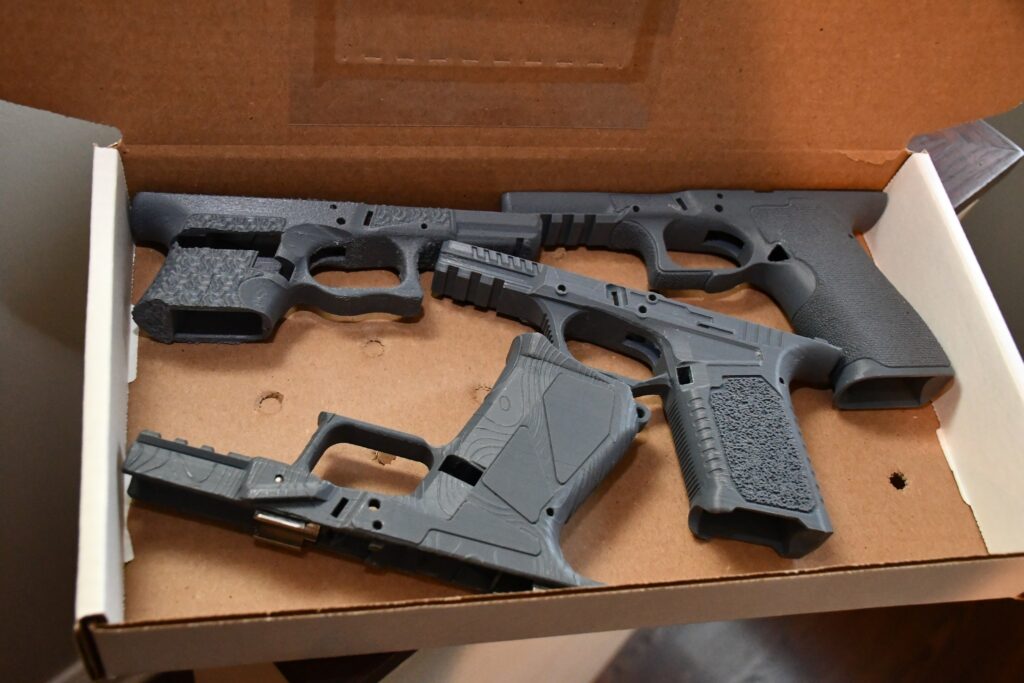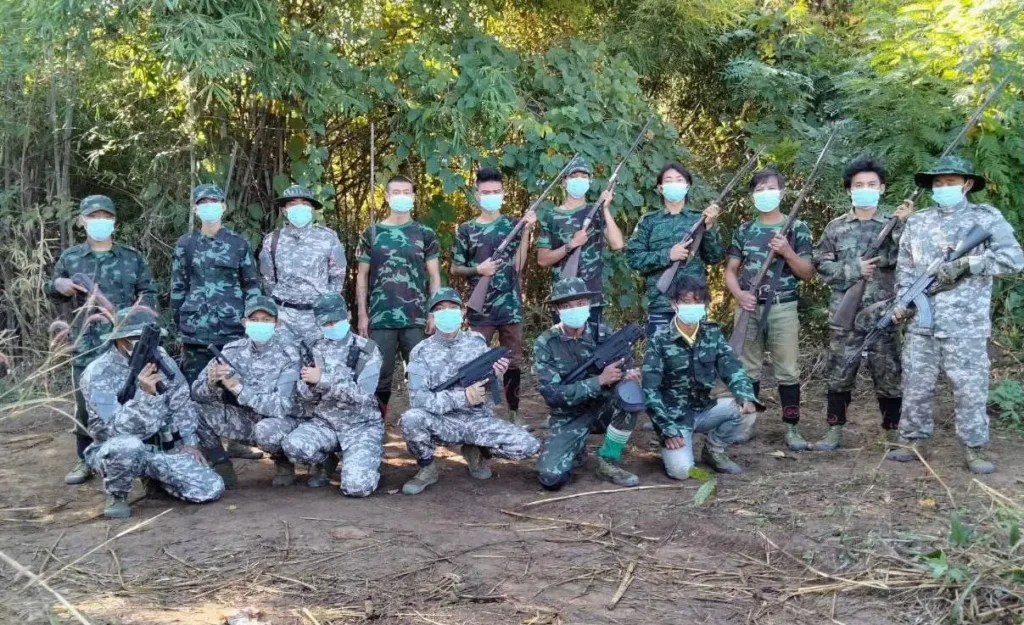The public debate regarding 3D printed weapons has taken a potentially pernicious turn, as New York State considers a bill regulating the sale of 3D printers, rather than guns themselves. State Assemblyperson Jenifer Rajkumar recently introduced legislation that would prevent allows individuals, including convicted felons, to circumvent gun ownership restrictions by 3D printing “ghost guns.”
The proposed law, designated as AB A8132, stipulates that anyone wishing to buy a 3D printer capable of crafting a firearm must submit to a criminal history background check. The legislation would further restrict the sale of such printers to anyone disqualified from firearm ownership due to a criminal history.
“Three-dimensionally printed firearms, a type of untraceable ghost gun, can be built by anyone using a $150 three-dimensional printer,” Rajkumar noted in a memorandum explaining the bill. “This bill will require a background check so that three-dimensional printed firearms do not get in the wrong hands.”
The Legal Status of Ghost Guns
This isn’t the first time that 3D printed guns have become something of a political football. The 3D Printed Gun Safety Act was introduced to the U.S. Senate in July 2021 by Massachusetts Senator Ed Markey. The legislation aims to halt the online sharing of 3D printed gun files. U.S. Senator Kirsten Gillibrand, of New York, then highlighted the Act at a recent press conference. Nevertheless, the Act has not moved forward in Congress.

Westchester County Police seize 3D printer and 3D printed gun parts August 15, 2023. Image courtesy of Westchester County Police.
The issue of “ghost guns” — unserialized, untraceable firearms assembled without background checks — has attracted considerable attention more recently. The U.S. Supreme Court recently issued a stay, temporarily halting a lower court ruling that had prevented the Bureau of Alcohol, Tobacco, Firearms and Explosives (ATF) from categorizing ghost guns as firearms under federal law. Ghost guns, which include weapons assembled from kits as well as 3D-printed firearms, are often untraceable and can be acquired without background checks.
The ATF has introduced a new regulation that subjects these kits and 3D printed guns to the same legal requirements as traditional firearms, such as the need for serial numbers. With a narrow 5-4 decision, the Supreme Court has maintained this regulation for the time being as other legal challenges proceed.
Since initiating tracking efforts in 2021, the Manhattan district attorney’s office has reported 90 prosecutions related to ghost guns. In New York, it’s permissible for licensed gun owners to manufacture their own firearms with 3D printers. However, these self-made weapons must be registered promptly with the ATF.
Untraceable weapons cans be made with a range of technologies, but authorities have taken an increasing interest in additive manufacturing (AM) in particular as more ghost guns made with the technology are discovered. According to 3DPrint.com‘s research, the number of arrests related to 3D printed guns has doubled since 2022, marking over a 100-fold rise since the first such arrest in 2013.
Regulating 3D Printers
According to one legal researcher involved in the 3D printing community, the lack of sponsors on Rajkumar’s bill means that it’s not yet popular.
👋 Independent Legislative Researcher here
While I typically specialize in queer legislation I can speak on a few things.
This bill has 1 sponsor. Which tells me that so far it’s not popular. Not only that it has just been introduced and it being considered in one chamber.
— Allison Chapman (@AlliRaine22) October 16, 2023
The significant difference between other legal measures that have been taken and the bill introduced by Rajkumar is that her bill is targeted at regulating the sale of 3D printers themselves, and not 3D printed weapons. This has been the fear of the 3D printing community since the debate around the 3D printing of guns was first made mainstream by Defense Distributed’s Cody Wilson a decade ago.
Most trade publications shy away from coverage of illicit 3D printed guns in fear of bringing the issue too much attention and, thus, attracting the sort of legislation proposed by Rajkumar. One of the major reasons for dismissing the use of AM specifically for weapons production is that there are other, more effective ways of obtaining a gun. Most notably in the U.S., this would be outright purchasing one through any one of a number of loopholes.
However, the rise of AM for weapons fabrication can’t be entirely overlooked. Just as the technology has democratized the ability to create custom items in every other area, including medical supplies, it has done so for arms manufacturing. Though 3D printed plastic parts may not be as strong as mass manufactured counterparts, they are proving sufficient for such tasks as resisting a military junta.
Moreover, the ability to produce weapons will only improve as the technology does. This includes decreasing costs associated with printers capable of working with high-performance plastics or even cheaper machines that can print with metal filaments. One other element that those that neglect this underground segment often miss is that 3D printing is used for potentially dangerous weapons accessories, such as auto-sears for converting a rifle into a machine gun.
Now that the possibility of regulating 3D printers has raised its head, it’s more important for the AM industry to pay attention to the trend. The slippery slope here is that all of the benefits of low-cost 3D printing could someday become restricted only to businesses with the proper licenses. And, while rebel groups might be prevented on using AM for improvised weaponry, state militaries the world over are increasingly relying on the technology for 3D printing weapons-related parts on a daily basis.
Subscribe to Our Email Newsletter
Stay up-to-date on all the latest news from the 3D printing industry and receive information and offers from third party vendors.
Print Services
Upload your 3D Models and get them printed quickly and efficiently.
You May Also Like
Josh Makeshift and the New Gold Standard 3D Printing Content Creation
In the beginning, 2007 or so, 3D printing videos were almost wholly absent from the web. Then, here and there, makers started to upload pictures of their rickety RepRaps and...
Teen Developed Desktop 3D Printing Extruder
Inexpensive desktop 3D printing extrusion has always been an impactful potential ally to 3D Printing users. Filabot and 3Devo have been trying to make this a reality for years, with...
Polymaker Unveils HT-PLA & HT-PLA-GF Line of 3D Printing Filaments
Today, Polymaker has launched a new line of HT-PLA & HT-PLA-GF filaments. These enhanced PLA versions increase the glass transition temperature of PLA from a normal 60°C to above 130°C....
3D Printing News Briefs, May 17, 2025: Color-Changing Materials, Humanoid Robot, & More
We’re covering research innovations in today’s 3D Printing News Briefs! First, Penn Engineering developed 3D printed materials that change color under stress, and UC Berkeley researchers created an open source,...

































